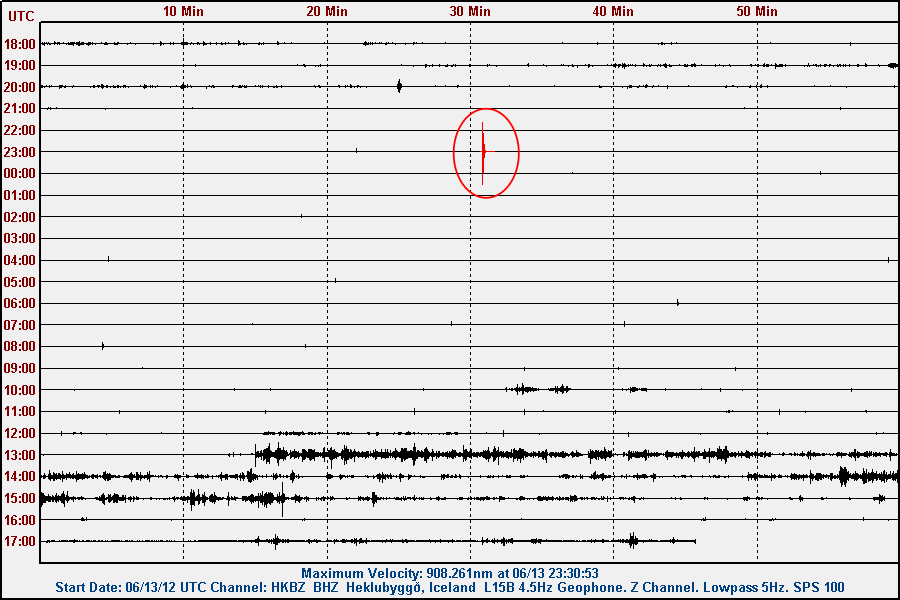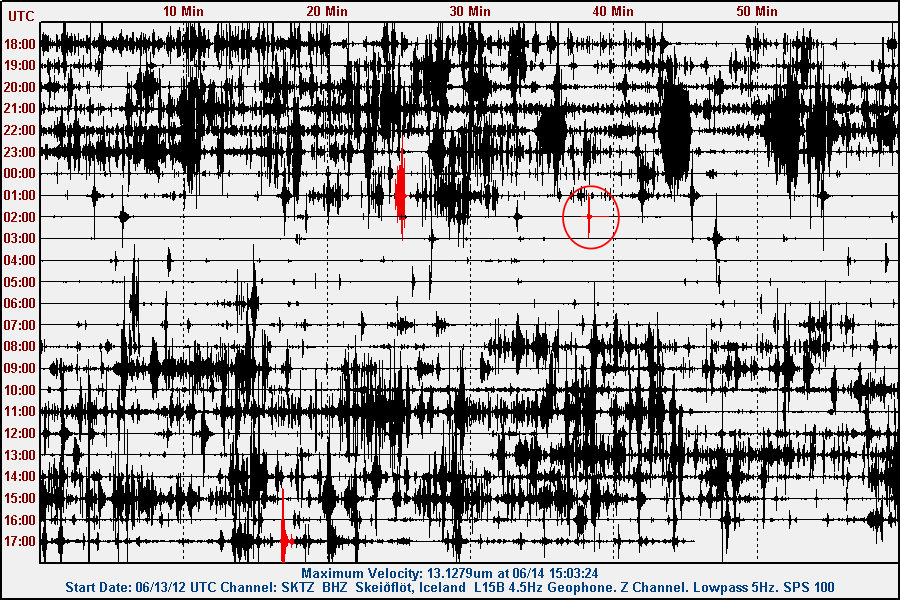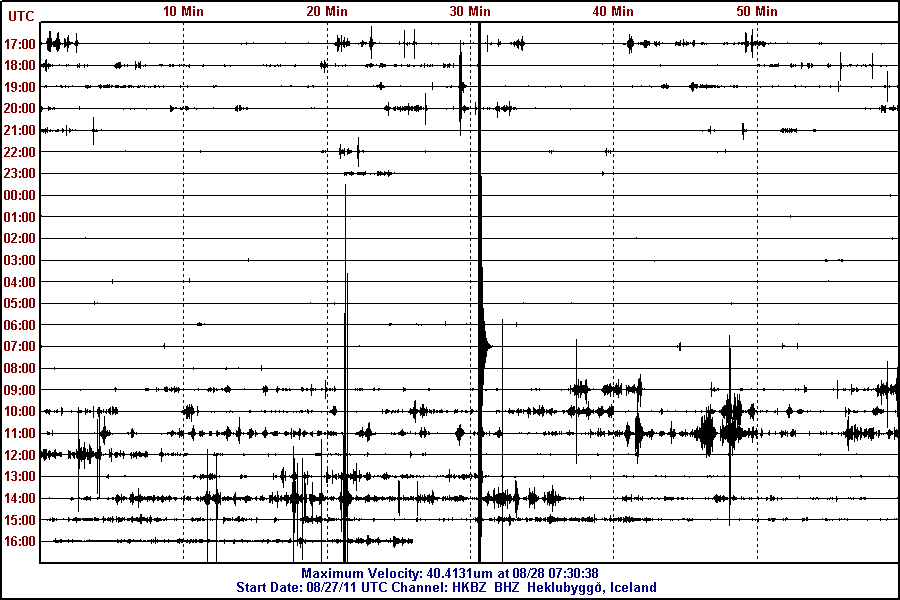I run today 5 geophones. Four of them are located in Iceland. I have one geophone in Denmark where I am living. My helicorder web site can be found here. This blog post is meant to help people on reading what takes place on this geophones. What is earthquake and what is noise. As on my geophones there is a lot of noise taking place. I have put in markers on this images for easy reading. It is my first attempt on doing that. I hope it looks decent.
This is Hvammstangi geophone station earlier today. The green line, marked as note 1 means that I lost the connection with Hvammstangi geophone station during the night. Note 2 shows a typical noise on that geophone.
The red circle on shows a small earthquake that took place during the night close to Hekla volcano. The rest appears to be just a noise from nature, wind etc. Heklubyggð is often a quiet station.
Red circle around the earthquake that took place in Katla volcano during the night. The rest is just noise, cars, human walking around, wind etc.
This is the geophone station at Eyrarbakki. It doesn’t have any earthquake that I can see. But it has plenty of noise from all types of sources. Mostly washing machines of all types, human waking around, cars, wind etc.
I hope this rather short guide helps people finding earthquakes among the noise on my geophones. It is easier to find larger earthquake then smaller on my helicorders that I have online.
Update 1: Here is a picture of a larger earthquake taking place in SISZ in the year 2011.
The earthquake is the line that crosses above the helicorder image. This earthquake however only the magnitude of ML2.0 or around that. But it was close to my geophone at Heklubyggð.
Blog post updated at 01:14 CEST on 15.06.2012.






Mýrdalsjökull: Múlakvísl; V089
Follow even some high conductivity, which I think it works very well is the measure of PH.
Excellent, thanks Jón. Could you please add a picture of a bigger quake to this post, when you see one, for reference. The bigger ones look a bit different.
I have added a image that I found from the year 2011. It shows a bit larger earthquake then in last few hours. But I have to dig a bit into my collection to find a proper image of a larger earthquake.
Great, good to have this.
Hi,
I have a question about your Skeiðflöt-diagram. There are three sections marked in red and you say that the second is an earthquake. Why is the last red marked section not an earthquake? What characteristics on this signal tell you that it is noise?
Noise is a single tone. But earthquakes have P and S wave. As can be seen some noise looks like a earthquake, but it is not. Noise also starts and stops suddenly.
There are many false positives. But I have become good at spotting them over the years.